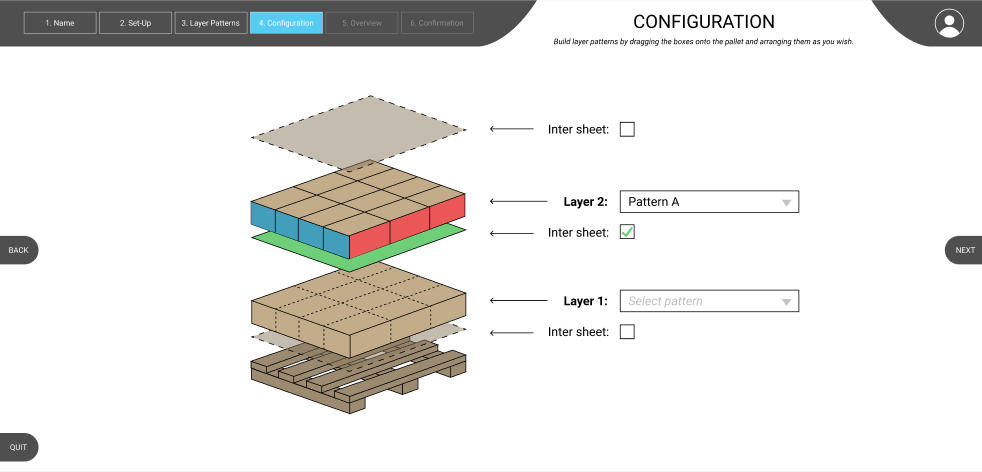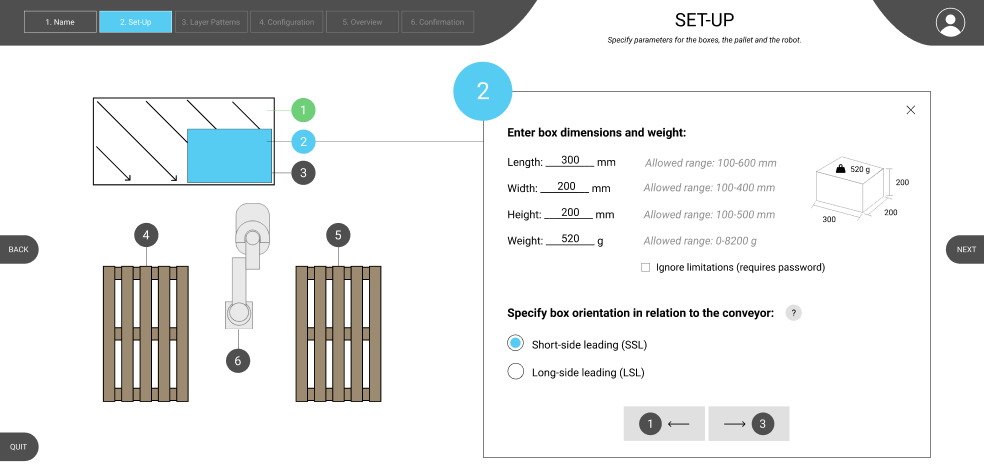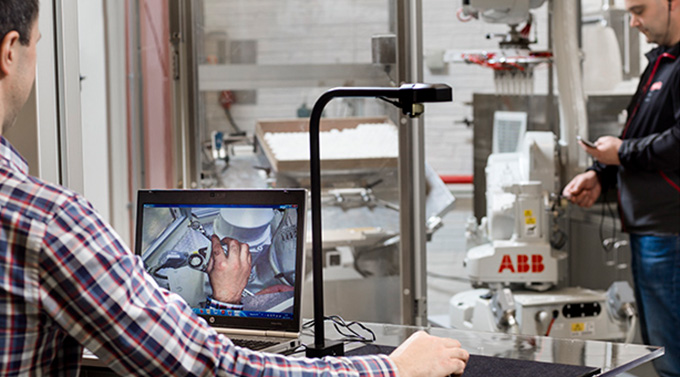
In recent years, software products have become a prominent part of our daily lives. When software applications are easy to use, they help us perform tasks and achieve our goals, which is particularly important when we are at work. In factory environments, software products should help us work efficiently and accurately, but this can only be accomplished if they are designed with us in mind.
In this blog article, we describe how usability and user experience were taken into consideration during the development of a configuration application for an industrial robot, from the very beginning.
The key is user experience
Nowadays, whether or not software products are well-received by users is no longer dependent on functionality alone. Instead, the key differentiator is user experience, which essentially means that software should not only be functional but also easy and pleasant to use. In turn, this is achieved by making the software design user-focused.
Designing software that is easy to use makes the operators’ work more time-efficient and safer, with the added benefit of reducing the risk of costly errors.
Research study for improving the usability
To create such software, the literature on the topic of user experience advocates utilizing so-called ‘design principles’: the basic foundations of digital design. Jakob’s Law is such a principle and recommends implementing design patterns that users are already familiar with. Applying the principles when designing software helps to improve usability, which creates an enhanced user experience.
An investigation was initiated to understand if the user experience of FlexLink’s pallet pattern configuration software could be improved by redesigning it in accordance with said principles.
This study was conducted by Sara Miric-Smojver; it served as her Master’s thesis in Industrial Design Engineering at Chalmers University of Technology, as well as provided vital input for FlexLink’s ongoing development project.
Repeated user testing is an integral part of software development
In essence, the study was based on an iterative design process, where prototyping was alternated with user testing and practical user experience assessments.
As the first step, the existing application was tested and assessed to establish a baseline for comparison. A selection of users, including both frequent users of the existing system, and those who had not used it before, were presented with a set of tasks to perform, using the application.
Following task completion, the users were given a survey to evaluate how they had interacted with the software. The findings constituted the foundation for building a new prototype, which was then subjected to the same procedure as the one described above.
A total of three such tests were performed, resulting in three prototypes. The outcome of these tests and user experience assessments for each prototype were used to refine the next one.
A picture is worth a thousand words

When developing the prototypes, the design principles were used to achieve consistency in terms of layout, communication, and interaction. Graphic illustrations were included to an increased extent in the prototypes. Visualizing pallet pattern configurations prevents information ambiguity and interpretational errors. As a result, understanding the application becomes easier and more convenient to inexperienced and experienced users alike, and the process of creating and exporting pallet patterns more efficient and user-friendly.
Implementing the theory in practical applications

The comparison between the user experience assessment results for the existing application and the final prototype shows a clear improvement of the user experience. In other words, utilizing the design principles works.
However, the study also indicates that what improves it is not that the principles are applied, but how they are applied. This “how” is determined not only by the users’ needs and cognitive capacity and limitations but equally so by their expectations and preferences. It is only when all these human factors are integrated into a software design that value is created and interaction with the software becomes meaningful to the users.
In complement to these findings, the study also exemplifies the importance of involving actual users in the design process and regularly allowing them to test the software in order to ensure that it satisfies their needs, expectations, and preferences. After all, user testing is the very prerequisite for making software user-centered.




Leave a Reply